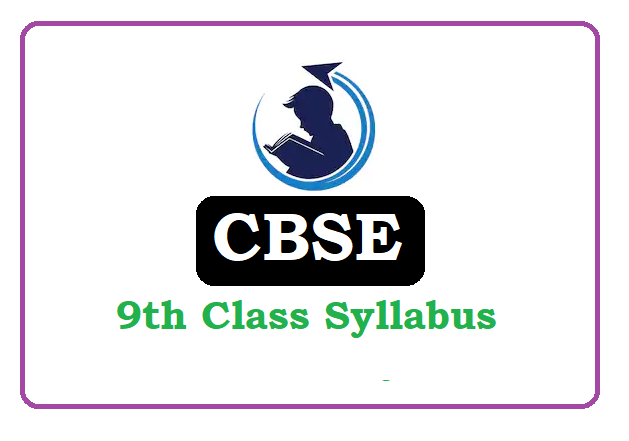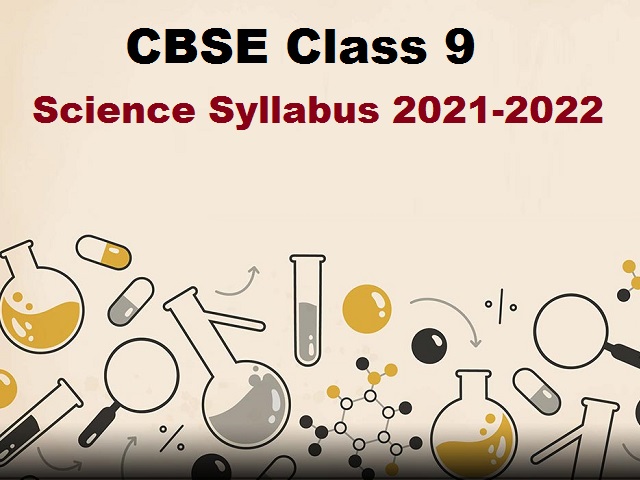CCBSE Class 9 Artificial Intelligence Syllabus 2024 Term 1 & 2 Pdf.CBSE Class 9 Science Curriculum mentions course materials and assessment scheme in the new academic session. Students need to know the complete curriculum in order to study this subject in a systematic manner and make proper plans to get good marks in all their tests and examinations in the current academic session .CBSE Class 9 Artificial Intelligence Syllabus Term 1 & 2 Pdf.CBSE Class 9 Artificial Intelligence Syllabus Term 1 & 2 Pdf.CBSE Class 9 Artificial Intelligence Syllabus Term 1 & 2 Pdf.
| CBSE 9th Class Syllabus | CBSE 9th Class new Syllabus |
|---|---|
| Name of the Education Board | Central Board of Secondary Education |
| Parent organization | Ministry of Human Resource Development |
| Type of Education | Governmental Board of Education |
| Standard | 9th class / Class IX |
| Name of the Subject | Biology , Physics , Urdu ,English, Hindi, Mathematics, Sanskrit, Science, Social science etc. |
| Syllabus Download | CBSE 9th Class Syllabus All Subject Pdf Format Download |
| official Website | www.cbse.nic.in |
CBSE Class 9 Artificial Intelligence Syllabus Term 1 & 2 Pdf

General Instructions:
1. There will be an Annual Examination based on the entire syllabus.
2. The Annual Examination will be of 80 marks and 20 marks weightage shall be for Internal Assessment.
3. For Internal Assessment:
a. There will be Periodic Assessment that would include:
→ For 5 marks- Three periodic tests conducted by the school. Average of the best two tests to be taken that will have a weightage of 05 marks towards the final result.
→ For 5 marks- Diverse methods of assessment as per the need of the class dynamics and curriculum transaction. These may include – short tests, oral test, quiz, concept maps, projects, posters, presentations and enquiry based scientific investigations etc. and use rubrics for arguing them objectively. This will also have a weightage of 05 marks towards the final result.
b. Practical / Laboratory work should be done throughout the year and the student should maintain record of the same. Practical Assessment should be continuous. There will be weightage of 5 marks towards the final result. All practicals listed in the syllabus must be completed.

Check Course Structure for Class 9 Science (Annual Examination):

heme: Materials (50 Periods)
Unit I: Matter-Nature and Behaviour
Definition of matter; solid, liquid and gas; characteristics – shape, volume, density; change of state melting (absorption of heat), freezing, evaporation (cooling by evaporation), condensation, sublimation.
Nature of matter: Elements, compounds and mixtures. Heterogeneous and homogenous mixtures, colloids and suspensions.
Particle nature and their basic units: Atoms and molecules, Law of constant proportions, Atomic and molecular masses.
Mole concept: Relationship of mole to mass of the particles and numbers.
Structure of atoms: Electrons, protons and neutrons, valency, chemical formula of common compounds. Isotopes and Isobars
Theme: The World of the Living (45 Periods)
Unit II: Organization in the Living World
Cell – Basic Unit of life:
Cell as a basic unit of life; prokaryotic and eukaryotic cells, multicellular organisms; cell membrane and cell wall, cell organelles and cell inclusions; chloroplast, mitochondria, vacuoles, endoplasmic reticulum, Golgi apparatus; nucleus, chromosomes – basic structure, number.
Tissues, Organs, Organ System, Organism: Structure and functions of animal and plant tissues (only four types of tissues in animals; Meristematic and Permanent tissues in plants).
Biological Diversity: Diversity of plants and animals-basic issues in scientific naming, basis of classification. Hierarchy of categories / groups, Major groups of plants (salient features) (Bacteria, Thallophyta, Bryophyta, Pteridophyta, Gymnosperms and Angiosperms). Major groups of animals (salient features) (Nonchordates upto phyla and chordates upto classes).
Health and Diseases: Health and its failure. Infectious and Non-infectious diseases, their causes and manifestation. Diseases caused by microbes (Virus, Bacteria and Protozoans) and their prevention; Principles of treatment and prevention. Pulse Polio programmes.
Theme: Moving Things, People and Ideas (60 Periods)
Unit III: Motion, Force and Work
Motion:
Distance and displacement, velocity; uniform and non-uniform motion along a straight line; acceleration, distance-time and velocity-time graphs for uniform motion and uniformly accelerated motion, derivation of equations of motion by graphical method; elementary idea of uniform circular motion.
Force and Newton’s laws: Force and Motion, Newton’s Laws of Motion, Action and Reaction forces, Inertia of a body, Inertia and mass, Momentum, Force and Acceleration. Elementary idea of conservation of Momentum.
Gravitation:
Gravitation; Universal Law of Gravitation, Force of Gravitation of the earth (gravity), Acceleration due to Gravity; Mass and Weight; Free fall.
Floatation: Thrust and Pressure. Archimedes’ Principle; Buoyancy; Elementary idea of Relative Density.
Work, energy and power: Work done by a Force, Energy, power; Kinetic and Potential energy; Law of conservation of energy.
Sound: Nature of sound and its propagation in various media, speed of sound, range of hearing in humans; ultrasound; reflection of sound; echo and SONAR. Structure of the Human Ear (Auditory aspect only).
Theme: Natural Resources: Balance in nature (15 Periods)
Unit IV: Our Environment
Physical resources: Air, Water, Soil. Air for respiration, for combustion, for moderating temperatures; movements of air and its role in bringing rains across India. Air, water and soil pollution (brief introduction). Holes in ozone layer and the probable damages.
Bio-geo chemical cycles in nature: Water, Oxygen, Carbon and Nitrogen.
Theme: Food (10 Periods)
Unit V: Food Production
Plant and animal breeding and selection for quality improvement and management; Use of fertilizers and manures; Protection from pests and diseases; Organic farming.
PRACTICALS (30 Periods)
Practicals should be conducted alongside the concepts tough in theory classes.
(LIST OF EXPERIMENTS)
1.Preparation of (Unit-I)
a) a true solution of common salt, sugar and alum
b) a suspension of soil, chalk powder and fine sand in water
c) a colloidal solution of starch in water and egg albumin/milk in water and distinguish between these on the basis of
2.Preparation of (Unit-I)
a) A mixture
b) A compound
using iron filings and sulphur powder and distinguishing between these on the basis of:
(i) appearance, i.e., homogeneity and heterogeneity
(ii) behaviour towards a magnet
(iii) behaviour towards carbon disulphide as a solvent
(iv) effect of heat
3.Separation of the components of a mixture of sand, common salt and ammonium chloride (or camphor). (Unit-I)
4.Perform the following reactions and classify them as physical or chemical changes: (Unit-I)
a) Iron with copper sulphate solution in water
b) Burning of magnesium ribbon in air
c) Zinc with dilute sulphuric acid
d) Heating of copper sulphate crystals
e) Sodium sulphate with barium chloride in the form of their solutions in water
5.Preparation of stained temporary mounts of (a) onion peel, (b) human cheek cells & to record observations and draw their labeled diagrams. (Unit-II)
6.Identification of Parenchyma, collenchyma and Sclerenchyma tissues in plants, striped, smooth and cardiac muscle fibers and nerve cells in animals, from prepared slides. Draw their labeled diagrams. (Unit-II)
7.Determination of the melting point of ice and the boiling point of water. (Unit-I)
8.Verification of the Laws of reflection of sound. (Unit-III)
9.Determination of the density of solid (denser than water) by using a spring balance and a measuring cylinder. (Unit-III)
10.Establishing the relation between the loss in weight of a solid when fully immersed in
a) Tap water (Unit-III)
b) Strongly salty water with the weight of water displaced by it by taking at least two different solids.
11.Determination of the speed of a pulse propagated through a stretched string/slinky (helical spring). (Unit-III)
12.Study of the characteristics of Spirogyra, Agaricus, Moss, Fern, Pinus (either with male or female cone) and an Angiospermic plant. Draw and give two identifying features of the groups they belong to. (Unit-II)
13.Observe the given pictures/charts/models of earthworm, cockroach, bony fish and bird. For each organism, draw their picture and record: (Unit-II)
a) one specific feature of its phylum.
b) one adaptive feature with reference to its habitat.
14.Verification of the law of conservation of mass in a chemical reaction. (Unit-III)
15.Study of the external features of root, stem, leaf and flower of monocot and dicot plants. (Unit-III)
→ Laboratory Manual-Science – Class IX, NCERT Publication
→ Exemplar Problems Class IX – NCERT Publication
